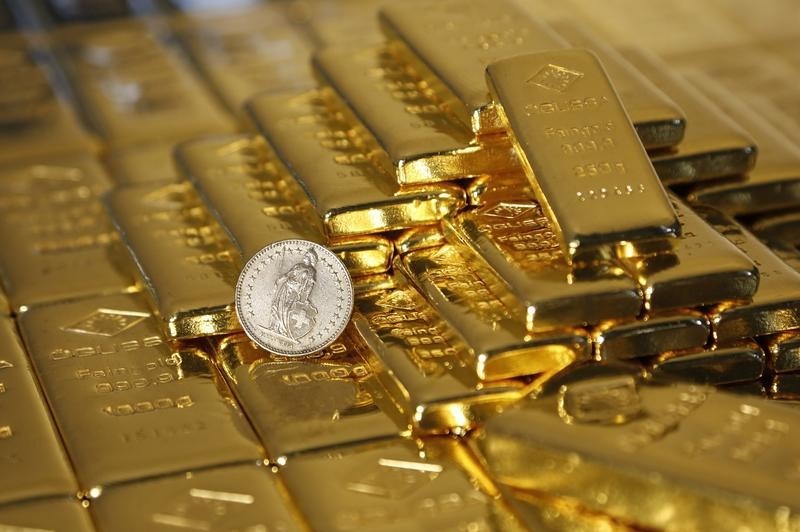By Geoffrey Smith
Investing.com -- Gold prices hit their highest levels in eight years on Monday on a fresh wave of panicked flight-to-safety trades across the world that also drove U.S. and European government bond yields to historic lows.
However, after briefly breaking through the $1,700 level, they retreated later in the day as U.S. stock markets regained a degree of composure.
By 11:35 AM ET (1535 GMT), gold futures for delivery on the Comex exchange were at $1,673.00 a troy ounce, up less than 0.1% on the day. Spot gold was down 0.2% at $1,671.33.
Elsewhere, silver futures fell 2.2% to $16.88 while platinum fell 3.5% to $865.10. Copper futures, ominously, broke clearly below $2.50 a pound to their lowest since December 2016. They recovered later to trade at $2.49, down 2.6% on the day.
Again there were anecdotal reports of some holders being forced to liquidate gold in order to meet margin calls on other portfolio positions.
If the pattern of last month is repeated, then that’s likely to cause only a temporary pullback in gold prices, given the unparalleled attraction at times of extreme market fear of an asset that is nobody else’s liability. According to data compiled by Bloomberg, money flooded into gold-backed ETFs last week at a rate not seen since September, buying a net 1.2 million ounces.
With investors discounting ever-more aggressive easing by central banks, with risk assets being liquidated across Asia, Europe and the U.S., and with ever more government bonds offering negative real and even negative nominal yields (the U.K. 2-year yield broke below zero for the first time on Monday), assets under management at gold-backed ETFs are now at record highs.
Expectations that central banks will loosen monetary policy further to support the global economy have strengthened still further after Saudi Arabia and Russia dissolved their four-year alliance to support oil prices. Crude fell 30% overnight and even if it stabilizes somewhat higher, the price collapse can only create a further disinflationary shock that will raise the pressure on central banks to ease.
The European Central Bank’s governing council is due to meet this week, against a backdrop of criticism that it has slipped behind the curve in offering only lukewarm reassurances of action. With its deposit rate already at -0.5% and bond purchases already running at 20 billion euros a month, some see the ECB as already out of bullets.
However, ING chief eurozone economist Carsten Brzeski argued in a research note Monday that “doing nothing is no longer really an option” for the bank. He said the announcement of a new targeted refinancing operation and tweaks to the bank’s collateral rules (aimed at keeping viable companies afloat) are both possible, as are a 10 basis-point cut in the deposit rate and a modest increase in bond purchases.
